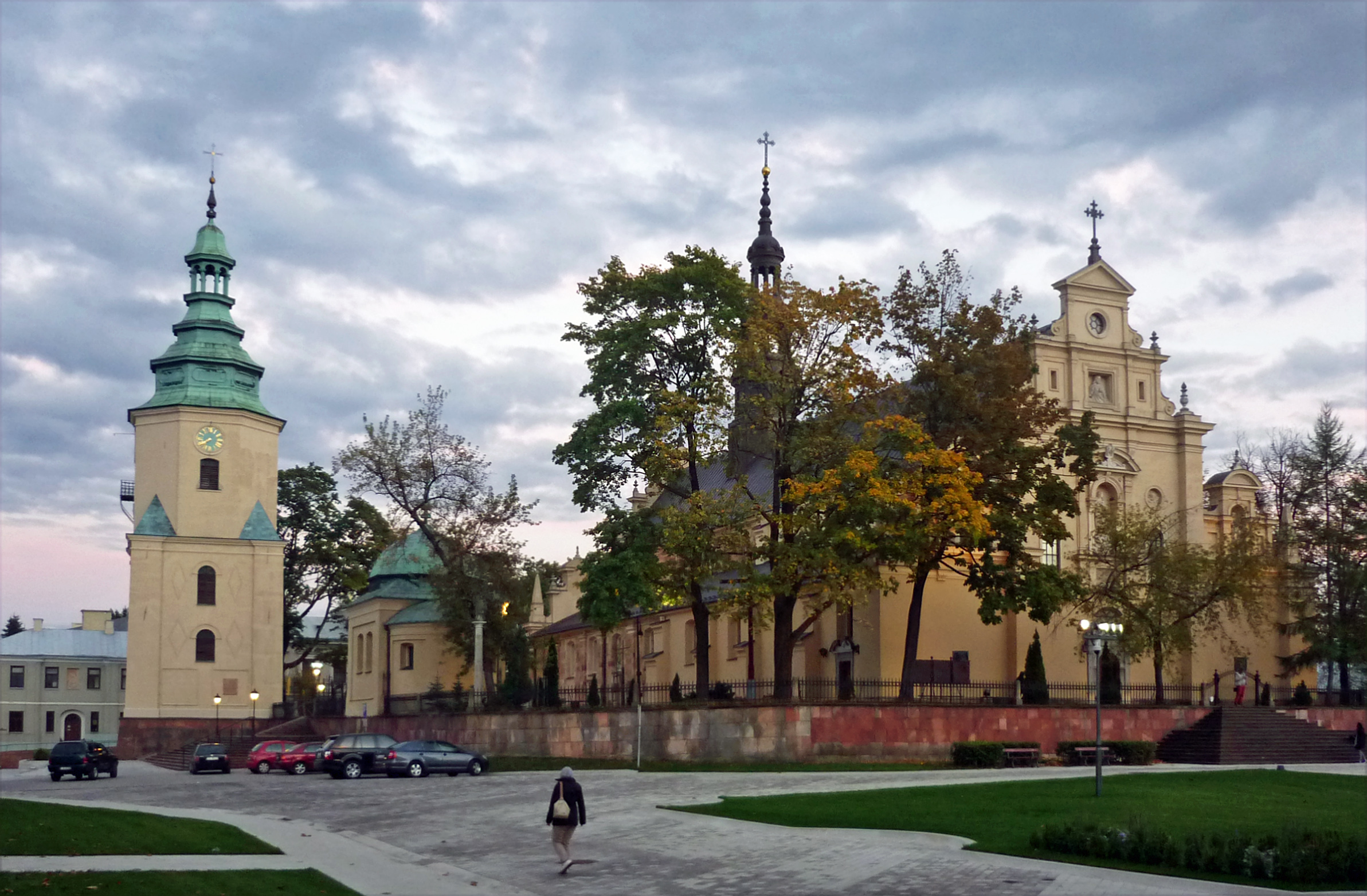Located in the heart of the Świętokrzyskie Mountains, Kielce is the economic and tourist center of the region. Many tourist trails linking monuments from different periods of Polish history cross in Kielce.
A known legend traces the founding of the city to the tale of Mieszko, the son of Boleslaus the Bold, who lived over 900 years ago. As the prince, tired with hunting in vast fir forests and searching for lost companions, fell asleep, he dreamt that brigands tried to pour poison down his throat. Suddenly, Saint Adalbert appeared to him and traced a wavy shape on the ground, which became a stream of water that gave superhuman power to the would-be victim of the nightmare apparitions.
Mieszko woke up and saw that he was resting on the bank of a stream, with huge, snow-white tusks (pol. kielce) lying beside. It was those mysterious tusks that lent the name of Kielce to the city. In memory of the event, Mieszko established a town and erected a wooden St. Adalbert church. To this very day a complex of sacred buildings dating from the baroque period stand.
Kielce is a city which enjoys a special bond with nature. The city area includes five natural reserves, with the Świętokrzyski Natural Park preserving mountain fir forests and vast stony areas. The highly varied geological structure of the Świętokrzyskie Mountains can be seen in the Museum of Geological Specimens. The slopes surrounding the town house numerous ski lifts.
Many tourist trails linking monuments from different periods of Polish history cross in Kielce. The oldest ones include a neolithic flint quarry in Krzemionki Opatowskie. It is hard to miss the Łysica cloister and the Chęciny castle, as well as the Museum of Kielce Countryside in Tokarnia. The museums in the city itself are also well worth a visit. The largest ones include a division of the National Museum in the Cracow Bishops Palace located in the city center. Since the history of Kielce is closely tied with the history of the ecclesiastical see, to have a fuller look into the city heritage one should also visit the Diocesan Musem. In order to get an hint of the living conditions of Polish gentry and commoners one should visit the romantic mansion of the Laszczykowie family, built from larch wood.
The Świętokrzyskie Mountains are home to a special species of this coniferous tree, prized for hundreds of years. Larix polonica, the Polish larch, can also be found in other parts of the country, but is here described as a different species.
World-unique collections can be seen in the large Museum of Toys and Play. Every day at noon from the clockwork tower of the nearby former department store which now houses the museum, instead of a cuckoo, a local witch – "Baba Yaga" from the nearby Łysa Góra springs out. Children and adults alike are encouraged to see the Rusieckis frog collection and the play corner. The institution continually offers new activities and graphics workshops for both children and parents. The website http://www.muzeumzabawek.eu should be visited regularly in order to keep oneself informed about new proposals. Of entirely different character is the museum kept in the former Kielce prison run by the German Gestapo, Soviet NKVD and the Polish Communist Security Service. The National Remembrance Museum covers the difficult period of persecutions of Poles between 1939 and 1956.
Due to its advanced industries and centralized location, as well as academic traditions, the city is also a known centre of business meetings during frequent fairs and expositions. The Kielce Fairs, organizing almost 30 industry expositions per year coupled with scientific conferences and displays, serve as a great opportunity to establish business contacts.

No comments:
Post a Comment